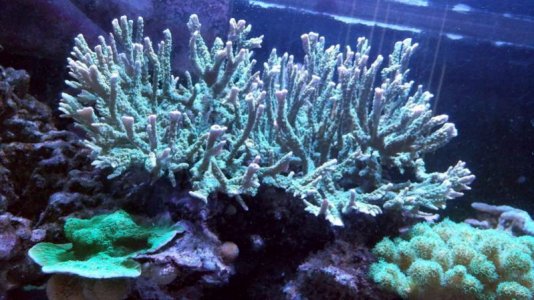How bad of a MH setup did you have?
I had (still have) a 4' Aqua Medic OceanLight with 2x 150W HQI and 1x 70W HQI... running the (3) factory Aqua Medic ballasts. I used it for at least 10 years, with Reeflux, Phoenix, and Ushio DE lamps. Never tried any cheap lamps. 370W total, 12-13 hours per day. Coral colors were good. Not outstanding, but good. This was over a 4', standard 75g glass tank.
Also, if you are seeing cost saving, you had too much light on before or not enough now. Sanjay nailed this in his article. There are no real savings over an appropriately lit tank from one to another.
In his article, Sanjay never said what % output he was using on the LED fixtures. Could be 100%, could be 40%. And if you're saying that 1 watt worth of light is always the same regardless of the light source, this is not correct (my apologies if I've misunderstood). At a given power output, light output varies greatly among different sources. MH lights produce both light and intense heat. The input power creates both. Watts are required to produce the heat, and power that is producing heat is not necessarily producing light, or at least not the light we want. Imagine two different light sources using the same input power. One source runs very cool (fluorescent or LED). One runs very hot (incandescent, MH, quartz). Which produces the most visible light per watt of input power? Physics tells us that the cool-running ones will. Adjust things so that the visible light output between the sources is the same, and the cool-running source will use less power for the same PAR. That's just basic physics, and there is no debating it. The fact that most of the MH heat is probably being produced as infrared light is not really important, since the corals have no use for infrared, as far as I'm aware. For my purposes, heat is heat and light is (visible) light.
I can't compare the Radion XR30's. I'm using a pair of AI Hydra 52HD's. I can only say that previously I used 370W of MH, and now I use slightly more than half of the available 270 total watts from the two Hydras, or roughly 160W. My corals are still just as healthy, growing fine, and the appearance of the tank is as good to my eye. I have no nuisance algae, and the coloring of every coral in the tank is better now, even at the same color temperature of light. Were the MH lights producing 210W worth of heat and only 160W (or less) worth of light? I haven't tried to calculate it, and don't really have much interest in doing so, but it's certainly possible.
What I can say is that I was happy with the MH while I used them (aside from the heat and the cost of operation). And I'm just as happy with the Hydra 52 HD's now... and I'm saving money with them every day.

